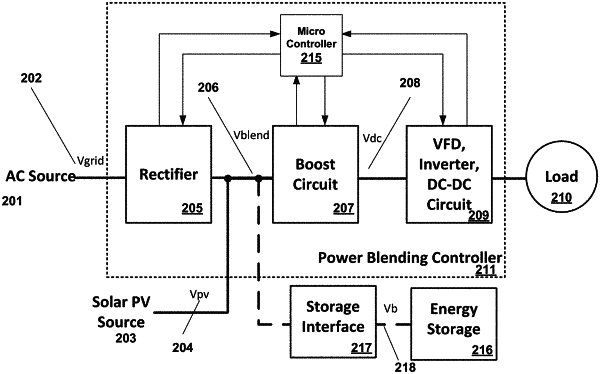| CPC H02J 3/381 (2013.01) [H02J 1/102 (2013.01); H02J 3/32 (2013.01); H02J 7/34 (2013.01); H02J 2300/26 (2020.01)] | 23 Claims |

|
1. An energy blending device having a first input configured for receiving alternating current (AC), a second input configured for connection to solar panels, and a first AC output, the energy blending device comprising:
a rectifier receiving the first input, and coupled to power an energy blending node;
the second input coupled to power the energy blending node through a first boost circuit,
the energy blending node coupled to power a first variable frequency motor drive (VFD) coupled to drive the first AC output; and
a microcontroller coupled to control the first boost circuit and first VFD; and
wherein the microcontroller is configured to receive inputs from sensors adapted to measure voltage, current, and frequency provided by the first VFD, the microcontroller being configured to control voltage of the energy blending node, the microcontroller configured to operate the first boost circuit to track a maximum power point (MPP) of any photovoltaic power source coupled to the second input, and the microcontroller is configured to start the first VFD at reduced frequency and voltage, and to then increase frequency and voltage of the first VFD to match power coupled through the first VFD to available power.
|